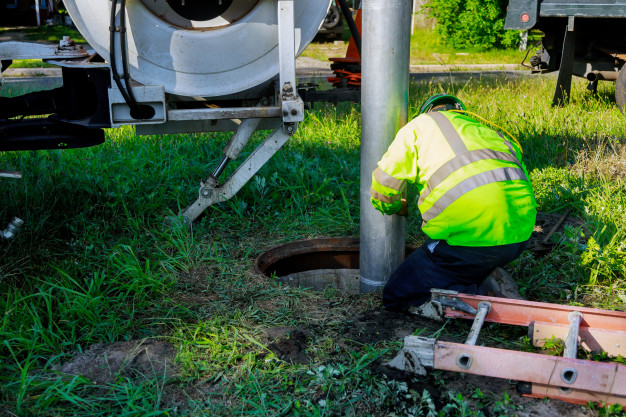There are four steps to septic system maintenance, so make sure to follow these key elements:
Inspect And Pump Frequently
Average household septic systems should be inspected every three years, and septic tanks should be pumped every three to five years. This is a general rule but factors like household size, the volume of solids in wastewater, septic tank size and total wastewater generated will all impact the frequency of septic pumping. A service provider will inspect for leaks while examining the layers of sludge and scum in your septic tank, which will help determine when to pump out your tank.
Use Water Efficiently
This is very important because if water is used efficiently, it will improve the operation of a septic system and will also reduce the risk of failure. There are different ways to save water, and the use of water-efficient products is a great start.
High-efficiency toilets, washing machines, and showerheads are available, and these can help make a significant difference. It’s also important to check for leaks and other damages because a single leak or running toilet can waste a ton of water per day.
Dispose Of Waste Properly
Everything that gets flushed down the toilet poured down the sink, thrown in a garbage disposal or poured down the bath will end up in your septic system. For this reason, you need to be mindful of everything that goes down your drains, as this will affect the efficiency of your septic system and how well it works.
You need to remember that your septic system is not a trash can, so you can’t just flush anything you want down your toilets. In fact, the only thing that should be flushed is human waste and toilet paper. Hygiene products, cooking grease, floss, diapers, and cigarette butts are just a few examples of things that should never be flushed down a toilet. Your septic system contains living organisms that digest and treat household waste, and pouring your toxins down the drain can kill these organisms and harm your septic system.
Maintain Your Drainfield
This is a component of your septic system that removes contaminants from the liquid that emerges from your septic tank and is a very important part of your system. In order to maintain this aspect, you must never park or drive on your drain field and must plant trees at an appropriate distance so that the roots do not grow into your septic system.
It’s also a must that you keep the roof drains, sump pumps, and other rainwater drainage systems away from the drain field area because excess water will slow down or stop the wastewater treatment process.
Schlager Excavating & Landscaping can tell you where to plant your trees and can help with your landscape design. We can provide you with driveway gravel, snow removal services, and a great landscape plan, so if your house can use a few improvements and you are in the Parry Sound area, give us a call now!

